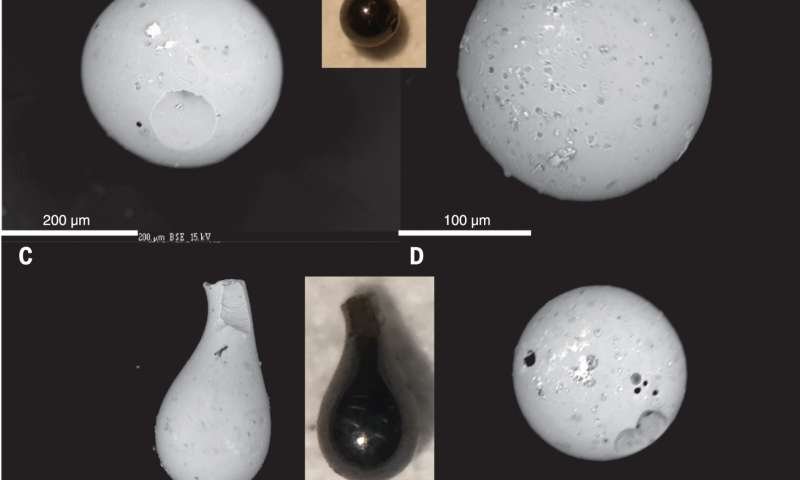Did An Extraterrestrial Object Hit The Earth And Trigger An Ancient Warming Period?
MessageToEagle.com – A while back, researchers from Rutgers University suggested that the rapid change in the amount of carbon in the atmosphere was caused by an extraterrestrial object that hit the Earth million years ago.
This is not in line with the mainstream theory according to which carbon came from volcanism or some other earthly cause, over thousands of years.
Therefore, at the time, the controversial extraterrestrial impact idea was met with skepticism, but new evidence shows this event could really have happened in the distant past.

Scientists have found evidence along the New Jersey coast that indicates a comet hit the Earth at the same time a mysterious release of carbon dioxide suddenly warmed the planet, some 55.6 million years ago.
The warm period, known as the Paleocene-Eocene Thermal Maximum (PETM), is often cited as the closest analog to today’s rapid human-induced climate change. The event changed the entire environment of Earth, causing some mass extinctions and turning Antarctica into lush tropical region. The exact cause of the event has been a bit of a mystery.
Researchers of the new study do not explicitly say that an impact triggered the PETM, but the implication is consistent with the authors’ previous work suggesting such an abrupt trigger.
See also:
Fukang: One Of The Greatest Extraterrestrial Gemstones Of The 21 Century
Star Wars In The Middle Ages? Unexplained Ancient Radiation Burst Hit Our Planet Over 1200 Years Ago
Comet Swift-Tuttle: Largest Known Object That Repeatedly Passes Near Earth
This could very well be the ground zero” of the PETM, said coauthor Dennis Kent, a researcher at Columbia University’s Lamont-Doherty Earth Observatory and Rutgers University. “It got warm in a hurry. This suggests where it came from.”
It was Kent who first suggested in a 2003 study that a comet triggered the PETM. He based his argument on magnetized clay particles found in New Jersey that he said could have been altered by a comet, but many colleagues quickly rejected the hypothesis.
The new study, published in the leading journal Science, offers additional evidence in form of tiny spherical droplets of glass called microtektites.
These are thought to are thought to be impact leftovers – rock debris that the comet or asteroid ejected when it hit Earth.

According to Kent, there are various scenarios about how an extraterrestrial impact might have operated. A comet would bring its own load of carbon into the atmosphere; the impact may also have vaporized carbon-rich sediments stored below the earth’s surface. However, those events alone might not account for the magnitude of the carbon increase and warming.
In line with existing theory, Kent says the impact also could have shaken loose frozen methane from the seabed, or helped waken massive volcanism. “It’s an event with a lot of consequences that would have unfolded in various aspects over seconds, minutes, hours, months and years,” he said.

If an impact took place there should a crater somewhere and it has not been found so far.
“It could have been next door, or it could have been on the other side of the planet,” said Schaller. The spherules are thinly spread, he said, which suggests the impact was large but far away, or close, but relatively small.
Charles Langmuir, a prominent paleoclimate researcher at Harvard University who was not involved in the study, said the evidence of an impact at or near the PETM boundary was “very strong.” However, he said, the study does not address what caused the carbon release, nor how long it took.
Gerald Dickens, a marine geologist at Rice University who studies the PETM is not very impressed with the study that in his opinion doesn’t really explain anything.
There are “multiple arguments for why the carbon input took thousands of years,” Dickens said. “Finding a few spherules does not change this.”
Maybe Dennis Kent and his colleagues are on the right track, but much more research must be done before we can say with certainty a comet is responsible for the increased amount of carbon in the atmosphere.
MessageToEagle.com










